- Accueil
- Pages cachées
- 15 MAI 2023 NEWS
15 MAI 2023 NEWS
INSTITUT SUPERIEUR D'ANTHROPOLOGIE
INSTITUTE OF ANTHROPOLOGY
ONLINE COURSES / COURS A DISTANCE
DEBUT COURS : JUIN 2023
REGISTER NOW
POLOGNE –  Słomniki - Archaeologists who, at best, were expecting to find traces of some old city walls were shocked to uncover a perfectly-preserved 7,000-year-old skeleton. Lying in a foetal position, the remains were found during a dig near Kraków. The discovery came during work to revitalize the market square and replace paving stones in Słomniki. The rare find has been preliminarily dated as being 7,000-years-old based on the arrangement of the body and the pottery fragments found in the grave. Micyk added that, unfortunately, objects in the grave had been partially disturbed; however, eight old fragments of very distinctive pottery had survived.The grave is believed to belong to a member of the first farmers in current-day Poland who appeared in the region from the Balkans but originated from Asia Minor. “The burial of the man found with his legs contracted, that is, in an embryonic position, is typical of the period. This was associated with the religious practices of the time and the positioning of the body, like a baby in the womb,” said Micyk. Other evidence pointing to the skeleton being 7,000-years-old include fragments of a vessel whose decorations point to the Linear Pottery Culture. Micyk pointed out the note-style decorations that were carved into the wet clay with a stylus. The skeleton has a partially cracked skull, but archaeologists say that this could be the result of being crushed by the earth when the grave cavity was filled in.Other prehistoric objects have been found in Słomniki. They include 3,000-4,000 year old Bronze Age items such as a clay spinning wheel along with fragments of weights used in weaving, as well as pieces of clay vessels and flint tools. Słomniki has a long-recorded history stretching back to 1287 when it appeared in historical records as a hunting and trading settlement. It officially became a city during the reign of King Casimir III the Great in 1358. The dig is still ongoing and archaeologists expect more interesting discoveries in the near future.
Słomniki - Archaeologists who, at best, were expecting to find traces of some old city walls were shocked to uncover a perfectly-preserved 7,000-year-old skeleton. Lying in a foetal position, the remains were found during a dig near Kraków. The discovery came during work to revitalize the market square and replace paving stones in Słomniki. The rare find has been preliminarily dated as being 7,000-years-old based on the arrangement of the body and the pottery fragments found in the grave. Micyk added that, unfortunately, objects in the grave had been partially disturbed; however, eight old fragments of very distinctive pottery had survived.The grave is believed to belong to a member of the first farmers in current-day Poland who appeared in the region from the Balkans but originated from Asia Minor. “The burial of the man found with his legs contracted, that is, in an embryonic position, is typical of the period. This was associated with the religious practices of the time and the positioning of the body, like a baby in the womb,” said Micyk. Other evidence pointing to the skeleton being 7,000-years-old include fragments of a vessel whose decorations point to the Linear Pottery Culture. Micyk pointed out the note-style decorations that were carved into the wet clay with a stylus. The skeleton has a partially cracked skull, but archaeologists say that this could be the result of being crushed by the earth when the grave cavity was filled in.Other prehistoric objects have been found in Słomniki. They include 3,000-4,000 year old Bronze Age items such as a clay spinning wheel along with fragments of weights used in weaving, as well as pieces of clay vessels and flint tools. Słomniki has a long-recorded history stretching back to 1287 when it appeared in historical records as a hunting and trading settlement. It officially became a city during the reign of King Casimir III the Great in 1358. The dig is still ongoing and archaeologists expect more interesting discoveries in the near future.
ISRAEL - 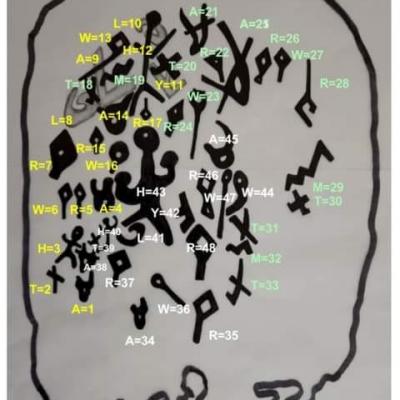 Mount Ebal - The peer review of the small 3,200-year-old curse tablet discovered at Mount Ebal in Samaria more than two years ago is expected to reignite the debate in the archaeological community over the find. It could prove the Israelites were literate at the time as well as shed light on the date of the Exodus from Egypt. “The text…is the oldest Hebrew text found within the borders of ancient Israel…by at least two centuries,” the article published in Heritage Science states. “The big point here is that we have evidence of Hebrew writing in Israel earlier than has previously been established, as well as mention of two of names of the Hebrew God, all from the site where the Bible said Joshua built an altar,” Scott Stripling, the provost at the Bible Seminary in Katy, Texas, who uncovered the tablet, said in a telephone interview with JNS. The folded, 2-cm. square lead tablet was found in December 2019, during an examination of discarded materials from an excavation at the site that had been led by University of Haifa Professor Adam Zertal (1936-2015) more than three decades earlier. Zertal carried out the dig where the ruins of ancient Shechem lie between 1982 and 1989, at the site of what he concluded were two altars dating to the Late Bronze Age II and Iron Age I. The Book of Joshua relates that Moses’s successor as leader built an altar on Mount Ebal as part of a covenant renewal ceremony soon after the Israelites returned to Canaan from Egypt. The site is known from the Book of Deuteronomy as a place of curses. The tablet emerged from a dump pile left behind from the original dig—common after excavations—in a process known as “wet sifting” whereby ancient stones covered in dirt are washed. The method, which was first used in Jerusalem for finds removed from the Temple Mount, is not considered as scientific as an actual dig, although in this case the item was found in situ. The tablet, which the researchers date to 1400-1200 BCE, could not be opened without damaging it, so a team of experts performed X-ray tomography scanning in Prague as well as detailed photography, revealing an ancient curse written in a proto-alphabetic script, the article, titled “You are Cursed by the God YHW: An Early Hebrew Inscription from Mt. Ebal,” states. The article includes images and scans of the inscriptions for other academics to weigh in on. The inscription contains as many as 48 letters and the curse appears on the inside and outside of the tablet.“You are cursed by the god, yhw, cursed. You will die cursed- cursed you will surely die. Cursed you are by yhw-cursed,” a translation of the inner inscription reads, according to the article.
Mount Ebal - The peer review of the small 3,200-year-old curse tablet discovered at Mount Ebal in Samaria more than two years ago is expected to reignite the debate in the archaeological community over the find. It could prove the Israelites were literate at the time as well as shed light on the date of the Exodus from Egypt. “The text…is the oldest Hebrew text found within the borders of ancient Israel…by at least two centuries,” the article published in Heritage Science states. “The big point here is that we have evidence of Hebrew writing in Israel earlier than has previously been established, as well as mention of two of names of the Hebrew God, all from the site where the Bible said Joshua built an altar,” Scott Stripling, the provost at the Bible Seminary in Katy, Texas, who uncovered the tablet, said in a telephone interview with JNS. The folded, 2-cm. square lead tablet was found in December 2019, during an examination of discarded materials from an excavation at the site that had been led by University of Haifa Professor Adam Zertal (1936-2015) more than three decades earlier. Zertal carried out the dig where the ruins of ancient Shechem lie between 1982 and 1989, at the site of what he concluded were two altars dating to the Late Bronze Age II and Iron Age I. The Book of Joshua relates that Moses’s successor as leader built an altar on Mount Ebal as part of a covenant renewal ceremony soon after the Israelites returned to Canaan from Egypt. The site is known from the Book of Deuteronomy as a place of curses. The tablet emerged from a dump pile left behind from the original dig—common after excavations—in a process known as “wet sifting” whereby ancient stones covered in dirt are washed. The method, which was first used in Jerusalem for finds removed from the Temple Mount, is not considered as scientific as an actual dig, although in this case the item was found in situ. The tablet, which the researchers date to 1400-1200 BCE, could not be opened without damaging it, so a team of experts performed X-ray tomography scanning in Prague as well as detailed photography, revealing an ancient curse written in a proto-alphabetic script, the article, titled “You are Cursed by the God YHW: An Early Hebrew Inscription from Mt. Ebal,” states. The article includes images and scans of the inscriptions for other academics to weigh in on. The inscription contains as many as 48 letters and the curse appears on the inside and outside of the tablet.“You are cursed by the god, yhw, cursed. You will die cursed- cursed you will surely die. Cursed you are by yhw-cursed,” a translation of the inner inscription reads, according to the article.
BELGIQUE – Arenberg - Archaeology students at KU Leuven have discovered remains of a 16th-century fortress while carrying out excavation work at Arenberg Castle in Heverlee, Leuven. The news first reported by Het Nieuwsblad has now been confirmed by the university. No previous research had been carried out in the basement. Historical drawings revealed the existence in the 16th century of a high residential tower attached to the present rear wing of the castle. During the excavations, the students discovered a rampart surrounding this residential tower, with its foundations and surrounding wall. The rampart walls, which were at least two metres wide, must have served as a means of surveillance: niches were found in them, with an opening for a cannon.
NORVEGE – 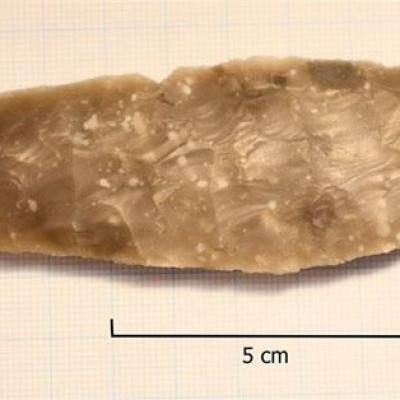 Vestland - While playing outside her school in Norway, an 8-year-old girl found an unexpected treasure — not a lost ball or a discarded jump rope, but a flint dagger crafted by Stone Age people 3,700 years ago. Elise showed the stone to her teacher, Karen Drange, who saw that the stone looked ancient. Drange contacted Vestland county council, and archaeologists from the county examined the artifact. The nearly 5-inch-long (12 centimeters) tool is a rare find, Louise Bjerre Petersen, an archaeologist with Vestland county municipality, said in the translated statement. Flint, a hard sedimentary rock, does not naturally occur in Norway, so the dagger may have come from across the North Sea in Denmark, according to the statement. This type of dagger is often found with sacrificial finds, the archaeologists added. Based on its style, the dagger likely dates to the New Stone Age, or the Neolithic, a time when prehistoric humans shaped stone tools and began to rely on domesticated plants and animals, build permanent villages and develop crafts, such as pottery.
Vestland - While playing outside her school in Norway, an 8-year-old girl found an unexpected treasure — not a lost ball or a discarded jump rope, but a flint dagger crafted by Stone Age people 3,700 years ago. Elise showed the stone to her teacher, Karen Drange, who saw that the stone looked ancient. Drange contacted Vestland county council, and archaeologists from the county examined the artifact. The nearly 5-inch-long (12 centimeters) tool is a rare find, Louise Bjerre Petersen, an archaeologist with Vestland county municipality, said in the translated statement. Flint, a hard sedimentary rock, does not naturally occur in Norway, so the dagger may have come from across the North Sea in Denmark, according to the statement. This type of dagger is often found with sacrificial finds, the archaeologists added. Based on its style, the dagger likely dates to the New Stone Age, or the Neolithic, a time when prehistoric humans shaped stone tools and began to rely on domesticated plants and animals, build permanent villages and develop crafts, such as pottery.
TURQUIE –  Osmaniye - A stunning mosaic depicting the legendary Trojan hero Aeneas who was mentioned in Homer’s “The Iliad” and “The Odyssey”, has been uncovered in southern Turkey. The mosaic was discovered when the excavation of foundations at a construction site revealed the remains of a Roman villa in the city of Osmaniye. According to Daily Sabah, experts noted no other example of this mosaic in the world. The visual quality and depictions of the mosaic rival the famous ancient city of Zeugma mosaics in Gaziantep. The mosaic area, built in the 1st and 2nd centuries A.D., is thought to have adorned the floor of a villa from that period. This place was the ancient Flaviapolis city built during the Roman era.
Osmaniye - A stunning mosaic depicting the legendary Trojan hero Aeneas who was mentioned in Homer’s “The Iliad” and “The Odyssey”, has been uncovered in southern Turkey. The mosaic was discovered when the excavation of foundations at a construction site revealed the remains of a Roman villa in the city of Osmaniye. According to Daily Sabah, experts noted no other example of this mosaic in the world. The visual quality and depictions of the mosaic rival the famous ancient city of Zeugma mosaics in Gaziantep. The mosaic area, built in the 1st and 2nd centuries A.D., is thought to have adorned the floor of a villa from that period. This place was the ancient Flaviapolis city built during the Roman era.
https://greekreporter.com/2023/05/11/stunning-mosaic-trojan-hero-aeneas-unearthed/
ANGLETERRE – 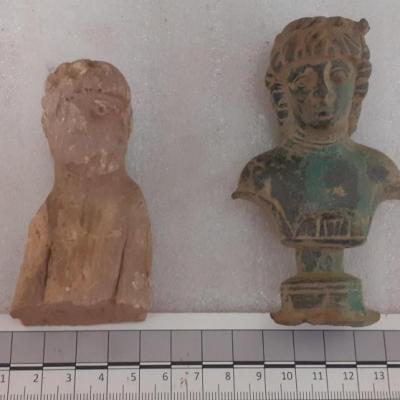
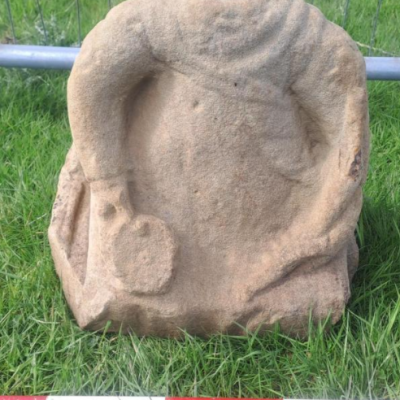 Cockermouth - Archaeologists from Ecus Ltd. uncovered traces of a Roman village and foundry on privately owned land in Cumbria. Among the artifacts found at the site are coins, pottery, a polished stone nude male figurine, and a stone sculpture of a seated woman identified as Fortuna, the Roman goddess of luck. The team also unearthed a copper alloy balsamarium, or incense and oil container, that was fashioned in the form of a bust of Bacchus, the Roman god of wine who was also associated with fertility and agriculture. "This is an exceptionally rare find, being one of only a handful excavated in Britain to date," said Ecus project officer Julie Shoemark. "We previously had an exquisite steelyard weight depicting Silenus, the satyr companion of Bacchus, so we now have a nice group of finds carrying the running theme of agriculture and fertility, which would have been central to the lives of this community.”
Cockermouth - Archaeologists from Ecus Ltd. uncovered traces of a Roman village and foundry on privately owned land in Cumbria. Among the artifacts found at the site are coins, pottery, a polished stone nude male figurine, and a stone sculpture of a seated woman identified as Fortuna, the Roman goddess of luck. The team also unearthed a copper alloy balsamarium, or incense and oil container, that was fashioned in the form of a bust of Bacchus, the Roman god of wine who was also associated with fertility and agriculture. "This is an exceptionally rare find, being one of only a handful excavated in Britain to date," said Ecus project officer Julie Shoemark. "We previously had an exquisite steelyard weight depicting Silenus, the satyr companion of Bacchus, so we now have a nice group of finds carrying the running theme of agriculture and fertility, which would have been central to the lives of this community.”
https://www.timesandstar.co.uk/news/23511980.archaeologists-discover-exceptionally-rare-find-cockermouth-site/
PEROU – 
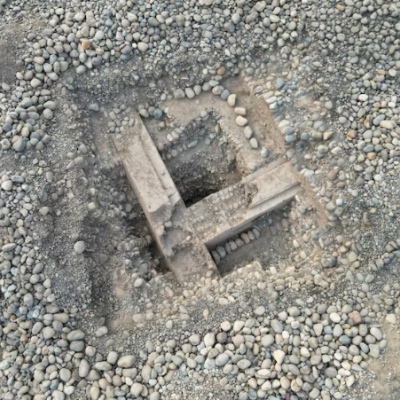 Miraflores - Peruvian archaeologists have found a 4,000-year-old temple in the Miraflores archaeological site located in western Peru, Universidad Nacional Mayor de San Marcos (UNSM) announced on Friday. Experts believe people carried out religious ceremonies in the U-shaped temple. UNSM archaeologists also found a chacana, an ancient cross symbol, carved into a frieze. "This chacana or southern cross is the oldest complete representation that has been found in the Andes," said archaeologist Pieter Van Dalen. He said the temple located in the lower valley of the Chancay River was where they carried out excavations and discovered the architecture that formed part of the temple. "We have also identified a series of religious cult activities that took place inside this pyramidal structure and we have been able to identify, on the back wall structure, the representation of a chacana carved in a frieze," he said. Mr Van Dalen said the discovery of this carving evidences the importance of the chacana symbol in ancient Peruvian cultures. "It evidences the long cultural and religious tradition related to this symbol that developed from as early as 4,000 years ago up to the Inca period in a continuous way.”
Miraflores - Peruvian archaeologists have found a 4,000-year-old temple in the Miraflores archaeological site located in western Peru, Universidad Nacional Mayor de San Marcos (UNSM) announced on Friday. Experts believe people carried out religious ceremonies in the U-shaped temple. UNSM archaeologists also found a chacana, an ancient cross symbol, carved into a frieze. "This chacana or southern cross is the oldest complete representation that has been found in the Andes," said archaeologist Pieter Van Dalen. He said the temple located in the lower valley of the Chancay River was where they carried out excavations and discovered the architecture that formed part of the temple. "We have also identified a series of religious cult activities that took place inside this pyramidal structure and we have been able to identify, on the back wall structure, the representation of a chacana carved in a frieze," he said. Mr Van Dalen said the discovery of this carving evidences the importance of the chacana symbol in ancient Peruvian cultures. "It evidences the long cultural and religious tradition related to this symbol that developed from as early as 4,000 years ago up to the Inca period in a continuous way.”
ARMENIE – 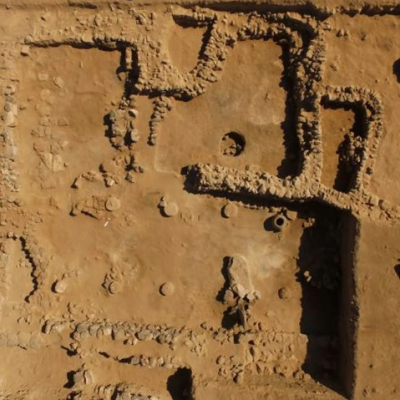 Metsamor - Metsamor was a fortified city with the earliest evidence of occupation dating to the 4th millennium BC (Chalcolithic). In the Late Bronze and Early Iron Ages, the settlement became an important religious and economic centre consisting of a large religious complex, a palace, and a fortified citadel. While it was long believed that the city was destroyed by the Urartians during the Iron Age, more recent research now suggests that the destruction was caused by Scythian or Cimmerian nomads. Excavations have uncovered a 3,000-year-old building supported by columns that was used from the 11th and the beginning of the 9th century BC. The building collapsed during a fire leaving behind what was believed to be layers of ash up to 36 cm thick, however, using floatation this has been revealed to be flour. Prof. Krzysztof Jakubiak from the Faculty of Archaeology at the University of Warsaw, said: “It is one of the oldest known structures of this type from the southern Caucasus and eastern Anatolia. Its remains have been preserved so well only thanks to an ancient fire.” The researchers estimate that the building stored up to 3.5 tons of flour, while the building consisted of two rows of wooden columns supporting a reed roof with wooden beams. Only the stone bases of the columns and well-preserved burned fragments of beams and roof sheathing have survived. The team suggest that the building initially had a representative function, but was converted for the production of bread, evidenced by the discovery of several furnaces.
Metsamor - Metsamor was a fortified city with the earliest evidence of occupation dating to the 4th millennium BC (Chalcolithic). In the Late Bronze and Early Iron Ages, the settlement became an important religious and economic centre consisting of a large religious complex, a palace, and a fortified citadel. While it was long believed that the city was destroyed by the Urartians during the Iron Age, more recent research now suggests that the destruction was caused by Scythian or Cimmerian nomads. Excavations have uncovered a 3,000-year-old building supported by columns that was used from the 11th and the beginning of the 9th century BC. The building collapsed during a fire leaving behind what was believed to be layers of ash up to 36 cm thick, however, using floatation this has been revealed to be flour. Prof. Krzysztof Jakubiak from the Faculty of Archaeology at the University of Warsaw, said: “It is one of the oldest known structures of this type from the southern Caucasus and eastern Anatolia. Its remains have been preserved so well only thanks to an ancient fire.” The researchers estimate that the building stored up to 3.5 tons of flour, while the building consisted of two rows of wooden columns supporting a reed roof with wooden beams. Only the stone bases of the columns and well-preserved burned fragments of beams and roof sheathing have survived. The team suggest that the building initially had a representative function, but was converted for the production of bread, evidenced by the discovery of several furnaces.
ALLEMGNE –  Schöningen - “It could have looked like this or something similar 300,000 years ago in Schöningen, Lower Saxony,” explains the first author of the study, Dr. Flavio Altamura, fellow of the Senckenberg Center for Human Evolution and Palaeoenvironment at the University of Tübingen (SHEP) and continues: “For the first time we have examined the fossil footprints of two sites in Schöningen in detail. These traces, together with information from sedimentological, archaeological, paleontological and paleobotanical analyses, provide us with insights into the paleoenvironment and the mammals that once inhabited the area. Among the footprints are also three tracks that match hominin footprints – dating back around 300,000 years, they are the oldest human tracks known in Germany and probably come from Homo heidelbergensis.” The scientists assign two of the three human traces in Schöningen to young individuals who used the lake and its resources in a small mixed-age group. »Depending on the season, plants, fruits, leaves, shoots and mushrooms were available around the lake. Our finds confirm that the extinct human species lived on the shores of lakes or rivers with shallow water. This is also known from other sites with Lower and Middle Pleistocene hominin footprints,” says Altamura. The various tracks in Schöningen show a snapshot of a family’s everyday life and can provide information about the behavior and social composition of the hominin group as well as about the spatial interaction and coexistence with herds of elephants and other, smaller mammals, the study says. “Because of the tracks left by children and young people, it’s probably more of a family outing than a group of adult hunters,” summarizes the archaeologist and expert on fossil footprints. In addition to the human tracks, the team analyzed a series of elephant tracks belonging to the extinct species Palaeoloxodon antiquus: a straight-tusked elephant that was the largest land animal at the time, with adult males weighing up to 13 tons. »The elephant tracks we discovered in Schöningen reach a remarkable length of 55 centimetres. In some cases we also found fragments of wood in the ruts that the animals had pressed into the ground, which was soft at the time,” explains Dr. Jordi Serangeli, head of the excavation in Schöningen, and adds: “One trace also comes from a rhino – Stephanorhinus kirchbergensis or Stephanorhinus hemitoechus – and is the first footprint of this species from the Pleistocene that was found in Europe.”
Schöningen - “It could have looked like this or something similar 300,000 years ago in Schöningen, Lower Saxony,” explains the first author of the study, Dr. Flavio Altamura, fellow of the Senckenberg Center for Human Evolution and Palaeoenvironment at the University of Tübingen (SHEP) and continues: “For the first time we have examined the fossil footprints of two sites in Schöningen in detail. These traces, together with information from sedimentological, archaeological, paleontological and paleobotanical analyses, provide us with insights into the paleoenvironment and the mammals that once inhabited the area. Among the footprints are also three tracks that match hominin footprints – dating back around 300,000 years, they are the oldest human tracks known in Germany and probably come from Homo heidelbergensis.” The scientists assign two of the three human traces in Schöningen to young individuals who used the lake and its resources in a small mixed-age group. »Depending on the season, plants, fruits, leaves, shoots and mushrooms were available around the lake. Our finds confirm that the extinct human species lived on the shores of lakes or rivers with shallow water. This is also known from other sites with Lower and Middle Pleistocene hominin footprints,” says Altamura. The various tracks in Schöningen show a snapshot of a family’s everyday life and can provide information about the behavior and social composition of the hominin group as well as about the spatial interaction and coexistence with herds of elephants and other, smaller mammals, the study says. “Because of the tracks left by children and young people, it’s probably more of a family outing than a group of adult hunters,” summarizes the archaeologist and expert on fossil footprints. In addition to the human tracks, the team analyzed a series of elephant tracks belonging to the extinct species Palaeoloxodon antiquus: a straight-tusked elephant that was the largest land animal at the time, with adult males weighing up to 13 tons. »The elephant tracks we discovered in Schöningen reach a remarkable length of 55 centimetres. In some cases we also found fragments of wood in the ruts that the animals had pressed into the ground, which was soft at the time,” explains Dr. Jordi Serangeli, head of the excavation in Schöningen, and adds: “One trace also comes from a rhino – Stephanorhinus kirchbergensis or Stephanorhinus hemitoechus – and is the first footprint of this species from the Pleistocene that was found in Europe.”
EGYPTE – 
 Nazlet Khater 2 - What did a young man look like 35,000 years ago? Modern DNA and computer modeling technology can give us a good, although imperfect, idea. Two Brazil-based researchers—archaeologist Moacir Elias Santos and 3D designer Cícero Moraes—recently published stunning facial reconstructions of a man who roamed Egypt hunting and gathering long before the pyramids and pharaohs. Starting with an ancient skull, the Paleolithic face they created is based on science with artistic decision-making. It allows viewers to feel close to this historic human. The team started from a skeleton discovered in 1980 at Nazlet Khater 2, an archeological site in ancient Egypt. The skeleton was largely complete except for some feet and hand portions. The ancient Homo sapien would have stood 5'3″ inches tall, and he was likely aged between 17 and 29 years. He is of African ancestry and would have hunted and gathered in a nomadic lifestyle. The skeleton is currently at the Egyptian Museum in Cairo, and it has since been discovered that it is about 35,000 to 30,000 years old. This is within the Upper Paleolithic, around the time the earliest modern human settlements and figurative art appeared. The skeleton predates the first pharaoh by over 25,000 years. To recreate his face, the researchers began with photographs of his skull. “The skull, in general terms, has a modern structure, but part of it has archaic elements, such as the jaw, which is much more robust than that of modern men,” Moraes told Live Science. “When I observed the skull for the first time, I was impressed with that structure and at the same time curious to know how it would look after approaching the face.” Using a technique called photogrammetry, the team first digitally reconstructed the skull, which was missing a piece. They then digitally added flesh. There are some guesswork and judgment calls in this process, as it is impossible to know exactly how the flesh would have laid on the bone.To balance the scientific and the artistic, they created two images. One is a neutral, greyscale, minimalist approximation. The other adds a beard, twinkling eyes, and color to bring the reconstruction to life. The team wants to humanize ancient Homo sapiens such as the Nazlet Khater 2 man by showing how they might have looked alive. The end result is a face you might think you'd recognize on the street today, at the gym, or at the office.
Nazlet Khater 2 - What did a young man look like 35,000 years ago? Modern DNA and computer modeling technology can give us a good, although imperfect, idea. Two Brazil-based researchers—archaeologist Moacir Elias Santos and 3D designer Cícero Moraes—recently published stunning facial reconstructions of a man who roamed Egypt hunting and gathering long before the pyramids and pharaohs. Starting with an ancient skull, the Paleolithic face they created is based on science with artistic decision-making. It allows viewers to feel close to this historic human. The team started from a skeleton discovered in 1980 at Nazlet Khater 2, an archeological site in ancient Egypt. The skeleton was largely complete except for some feet and hand portions. The ancient Homo sapien would have stood 5'3″ inches tall, and he was likely aged between 17 and 29 years. He is of African ancestry and would have hunted and gathered in a nomadic lifestyle. The skeleton is currently at the Egyptian Museum in Cairo, and it has since been discovered that it is about 35,000 to 30,000 years old. This is within the Upper Paleolithic, around the time the earliest modern human settlements and figurative art appeared. The skeleton predates the first pharaoh by over 25,000 years. To recreate his face, the researchers began with photographs of his skull. “The skull, in general terms, has a modern structure, but part of it has archaic elements, such as the jaw, which is much more robust than that of modern men,” Moraes told Live Science. “When I observed the skull for the first time, I was impressed with that structure and at the same time curious to know how it would look after approaching the face.” Using a technique called photogrammetry, the team first digitally reconstructed the skull, which was missing a piece. They then digitally added flesh. There are some guesswork and judgment calls in this process, as it is impossible to know exactly how the flesh would have laid on the bone.To balance the scientific and the artistic, they created two images. One is a neutral, greyscale, minimalist approximation. The other adds a beard, twinkling eyes, and color to bring the reconstruction to life. The team wants to humanize ancient Homo sapiens such as the Nazlet Khater 2 man by showing how they might have looked alive. The end result is a face you might think you'd recognize on the street today, at the gym, or at the office.
